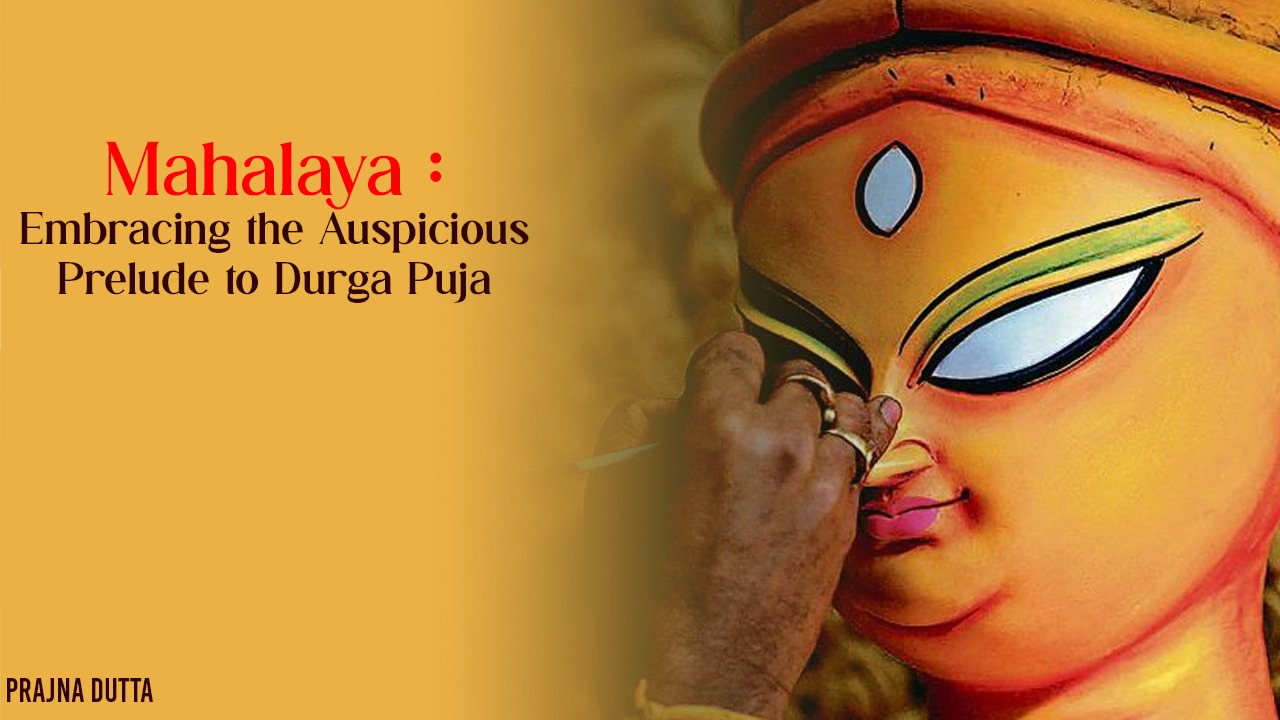Introduction:
Mahalaya, a significant event in the Bengali culture, marks the beginning of the festive season leading up to Durga Puja. It is a time when devotees invoke the blessings of the Goddess Durga and pay homage to their ancestors. Mahalaya holds immense cultural and religious significance as it sets the stage for the grand celebration of Durga Puja, one of the most widely celebrated festivals in West Bengal, India, and among Bengali communities worldwide. In this blog, we will explore the essence of Mahalaya and its customs, rituals, and the emotional connect it holds for the Bengali community.
1. The Significance of Mahalaya:
Mahalaya falls on the Amavasya (new moon) day of the Bengali month of Ashwin, heralding the advent of Devi Paksha, the period of the Goddess. It is believed that on this day, Goddess Durga begins her journey from Kailash, the abode of Lord Shiva, to the mortal world. Mahalaya is an invitation to the Goddess to descend upon the Earth and rid it of evil forces. It symbolizes the triumph of good over evil, light over darkness.
2. The Legend of Mahalaya:
According to Hindu mythology, Mahalaya is associated with the story of Mahishasura, a buffalo demon, who had acquired immense power and wreaked havoc on Earth. The gods, unable to defeat him, sought the help of the Trinity – Lord Brahma, Lord Vishnu, and Lord Shiva – who combined their powers to create Goddess Durga. The Devi, armed with divine weapons and riding a lion, vanquished Mahishasura after a fierce battle that lasted nine nights and ten days, known as Navratri or Durga Puja. Mahalaya marks the beginning of this epic battle.
3. Mahalaya and Tarpan:
One of the most important rituals of Mahalaya is Tarpan, a sacred offering to one's ancestors. Devotees wake up early in the morning and visit the banks of holy rivers or water bodies to perform Tarpan. They offer water, prayers, and food to their departed ancestors, seeking their blessings and forgiveness. It is believed that performing Tarpan on Mahalaya helps the souls of the departed attain peace and salvation.
4. The Alluring Chants of Mahishasura Mardini:
Mahalaya is incomplete without the captivating recitation of the "Mahishasura Mardini" hymns, also known as "Chandi Path." These hymns, composed by late poet Birendra Krishna Bhadra, depict the fierce form of Goddess Durga and her battle against Mahishasura. The enchanting recitation, broadcasted on radio and television, is a traditional pre-dawn ritual that fills the hearts of Bengalis with devotion and fervor.
5. The Emotional Connect:
Mahalaya holds a deep emotional connect for Bengalis, evoking nostalgia and a sense of unity. The recitation of Mahishasura Mardini by Birendra Krishna Bhadra has been a cherished tradition for generations, bringing families together in the early hours of the day. It awakens a feeling of cultural heritage and spirituality, reminding people of their roots and the power of the divine feminine.
6. Mahalaya and Durga Puja Preparation:
Mahalaya serves as a time of preparation for the grand celebration of Durga Puja. After Mahalaya, the countdown begins for the arrival of the Goddess. It marks the start of the elaborate preparations for the festival, including the construction of pandals (elaborate temporary structures) where the idols of Goddess Durga and her divine entourage will be placed. Artisans and craftsmen work tirelessly to create stunning idols, while decorators embellish the pandals with intricate designs and decorations.
7. Mahalaya and the Festive Atmosphere:
With Mahalaya, the festive atmosphere engulfs the entire Bengali community. The city streets come alive with colorful lights, and the air is filled with the fragrance of incense and the sound of dhak (traditional drum) beats. People eagerly shop for new clothes and engage in lively discussions about the upcoming celebrations. The spirit of togetherness and joy is palpable, as everyone eagerly awaits the arrival of the Goddess.
8. Mahalaya Celebrations Beyond West Bengal:
While Mahalaya is deeply rooted in Bengali culture, its significance has spread beyond West Bengal. Bengali communities residing in different parts of India and across the world observe Mahalaya with great enthusiasm. Cultural programs, recitations, and musical performances based on Mahishasura Mardini are organized in various cities, bringing Bengalis together and keeping their traditions alive.
9. Mahalaya in the Digital Age:
In recent years, Mahalaya has embraced the digital age, reaching a wider audience through live streaming and social media platforms. People can now experience the magic of Mahalaya from anywhere in the world, connecting with their cultural heritage and participating in the rituals virtually. Online platforms have also become a medium for artists to showcase their talent and offer their renditions of Mahishasura Mardini.
10. Conclusion:
Mahalaya, with its rich cultural and religious significance, sets the stage for the grand celebrations of Durga Puja. It is a time of invoking the blessings of the Goddess and paying homage to ancestors. The rituals, the recitation of Mahishasura Mardini, and the festive atmosphere create a sense of unity and nostalgia among the Bengali community. Mahalaya signifies the triumph of good over evil, and its essence continues to inspire and connect people, transcending geographical boundaries and generations.

Comments